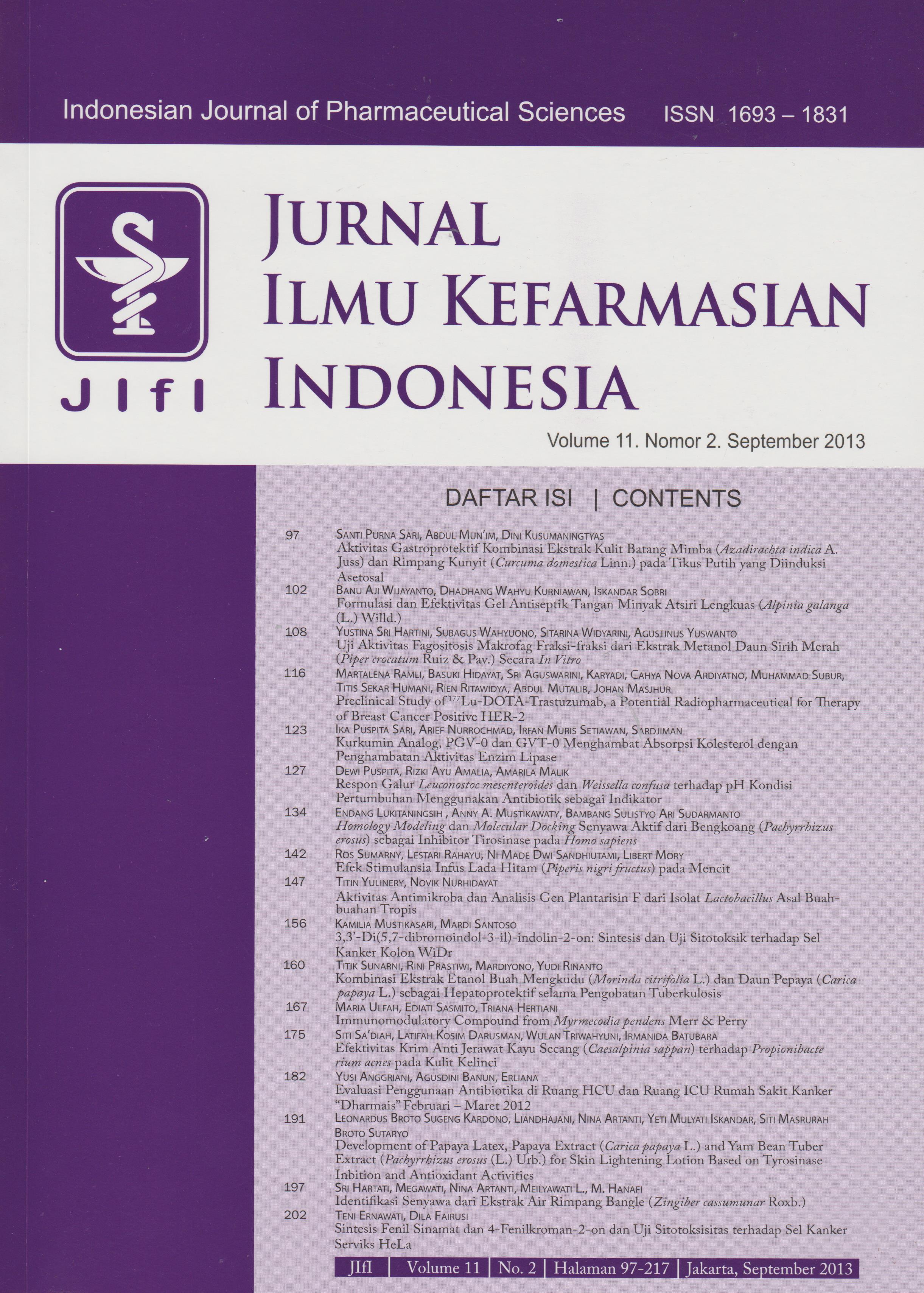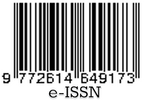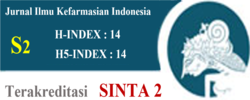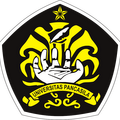Synthesis of Phenyl Cinnamate and 4-Phenylchroman-2-one and Cytotoxicity Activity Test Against HeLa Cervical Cancer Cells
Abstract
Cinnamic acid is a derivative of methyl cinnamate; it is included in the shikimic acid pathway derivatives. Cinnamic acid and its natural analogue are known as a cancer treatment for several centuries.Synthesis of phenyl cinnamic and 4-phenilkroman-2-on derived from methyl cinnamate had been done by using acid as a catalyst. Methyl cinnamic was first converted into cinnamic acid via hydrolysis reaction with alkaline. After that, cinnamic acid was chlorinated by using thionyl chloride and phenol reagent to produce fenil-sinamat. Esterification reaction was carried out by using an acid catalyst p-toluen sulfonic acid and phenol resulting 4-phenilkroman-2-on. We obtained the products for the synthesis of cinnamic acid, cinnamic phenyl and 4-fenilkroman-2-on, with yields respectively of 83.6%, 14.71%, and 16.18%.Cytotoxicity test using the brine shrimp lethality test (BSLT) was conducted on both cinnamic phenyl compound and 4-phenilkroman-2-on compound. LC50 values obtained for both compounds respectively were 223.87 ppm and 112.72 ppm. The results of MTT cytotoxicity assay method for cervical cancer HeLa cells (ATCC CCL2) using phenyl cinnamic and 4-phenilkroman-2-on were found that the percentage of inhibition obtained is over 50%.
References
2. Parkin MD, Pisani P, Ferlay J. Global cancer statistics. Cancer Journal for Clinicians. 1999. 49:33–64.
3. Sinaga E. Alpinia galanga (L.) Willd., Lengkuas. Pusat Penelitian dan Pengembangan Tumbuhan Obat UNAS (P3TO UNAS). Diambildari URL: http://www.warintek.ristek.go.id/pangan_kesehatan/tanaman_obat/depkes/Bunglai%20laki.pdf. diakses tanggal 10 Mei 2012.
4. Ernawati T, Wahyuningrum D, Minarti, Anita Y, Meilawati L, Lotulung PD. Development of raw materials for drugs by using methyl trans cinnamate isolated from galanga (Alpinia malaccensis) as novel approaches to drug discovery. In: The Eijkman Institute Comes of Age: Vitamins, Genomics, dan Welfare. Jakarta: Eijkman Institute for Molecular Biology; 2011. 146.
5. Muchtaridi, Ikhsan R, Ida M. Kadar metil sinamat dari batang, daun dan rimpang tumbuhan laja gowah (Alpinia malaccensis (Burm f.)) dengan GC/MS [skripsi]. Bandung: Fakultas Farmasi Universitas Padjajaran; 2008.
6. Li QF, Shi SL, Liu QR, Tang J, Song J, Liang Y. Anticancer effects of ginsenoside Rg1, cinnamic acid and tanshinone in osteosarcoma MG-63 cells: Down regulation and cytoplasmic trafficking of neucleophosmin. Int J Biochem Cell Biol. 2008. (40):1918–29.
7. Baltas MPDe, Belval FB. Cinnamic acid derivatives as anticancer agents- A review. Current Medicinal Chemistry. 2011.18:1672–1703.
8. Bairwa R, Mariam SD, et al. Novel molecular hybrid of cinnamic acids and guanylhidrazones as potential antitubercular agents. Bioorganic and Medicinal Chemistry Letters. 2010.20: 1623–25.
9. Li K, Lindsay NF, Jon AT.Trifluoroacetic acid mediated hydroarylation: Synthesis of dihydrocoumarins dan dihydroquinolones. J Org Chem. 2005.70(7):2881–83.
10. Lin HC, Shin HT, Chien SC, et al. Structure activity relationship of coumarin derivatives on xanthine oxidase inhibiting and free radical-scavenging activities. Biochemical Pharmacology. 2008.75:1416–25.
11. Baba M, Yongri J, Atsuo M, et al. Studies on cancer chemoprevention by traditional folk medicines XXIV. Inhibitory effect of a coumarin derivative, 7-isopentenylcoumarin, against tumor-prevention. Biol Pharm Bull. 2002.25(2): 244–46.
12. Ekowati H, Indwiani A, Mustofa. Anticancer activity of calanone on HeLa cell line. Indo J Chem. 2010.10(2):247–51.
13. Chuang, Jing-Yuang, Yung Feng Huang, Hsu Feng Lu, et al. Coumarin induces cell cycle arrest and apoptosis in human cervical cancer HeLa cells through a mitochondria and caspase-3 dependent mechanism and NF-kB down-regulation. In vivo. 2007. 2t:1003–10.
14. Sudalai A, Jagdale AR. p-toluenesulfonic acid mediated hydroarilation of cinnamic acids with anisoles and phenols under metal and solvent-free conditions. Tetrahedron Letters. 2007.48: 4895–98.
15. Dey PM, Harborne JB. Methods in plant biochemistry: Assays for bioactivity. Vol. 6. London: Academic Press; 1991. 1–30.
16. McLaughlin JL, Lingling LR, Jon EA. The use of biological assays to evaluate botanicals. Drug Information Journal. 1998.32:513–24.
17. Wu B, Jin-Shui Z, Yi Z, Wei-Ming S, Qiang Z. Predictive value of MTT assay as an in vitro chemosensitivity testing for gastric cancer: One institution’s experience. World Journal Gastroenterology. 2008.14(19):3064-68.
18. Sumaryono W, Agung E. Aktivitas sitotoksik ekstrak etanol daun Aglaia elliptica Blume terhadap galur sel kanker serviks (HeLa). J Ilmu Kefarmasian Indonesia. 2010.8(1):19-23.
19. Patric GL. Instant Notes Organic Chemistry. 2nd Ed. London: BIOS Scientific Publisher; 2004.
20. Hajra S, Maji B, Bar S. Samarium triflate-catalyzed halogen promoted Friedel-Craft alkylation with alkenes. Org Lett. 2007.15:2783–6.
Licencing
All articles in Jurnal Ilmu Kefarmasian Indonesia are an open-access article, distributed under the terms of the Creative Commons Attribution-NonCommercial-ShareAlike 4.0 International License which permits unrestricted non-commercial used, distribution and reproduction in any medium.
This licence applies to Author(s) and Public Reader means that the users mays :
- SHARE:
copy and redistribute the article in any medium or format - ADAPT:
remix, transform, and build upon the article (eg.: to produce a new research work and, possibly, a new publication) - ALIKE:
If you remix, transform, or build upon the article, you must distribute your contributions under the same license as the original. - NO ADDITIONAL RESTRICTIONS:
You may not apply legal terms or technological measures that legally restrict others from doing anything the license permits.
It does however mean that when you use it you must:
- ATTRIBUTION: You must give appropriate credit to both the Author(s) and the journal, provide a link to the license, and indicate if changes were made. You may do so in any reasonable manner, but not in any way that suggests the licensor endorses you or your use.
You may not:
- NONCOMMERCIAL: You may not use the article for commercial purposes.
This work is licensed under a Creative Commons Attribution-NonCommercial-ShareAlike 4.0 International License.





 Tools
Tools





















